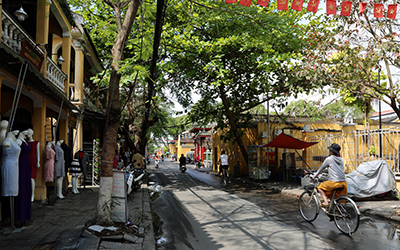Research Brief
Economic transformation in Vietnam
SMEs and access to credit
During the last three decades Vietnam has undergone a considerable economic transformation. However, little research has considered the role that financial reform has played in the development of small and medium size enterprises (SMEs). A focus on the financing of SMEs is of particular importance given the extensive international evidence that these companies are most likely to suffer credit access difficulties due to lack of information and collateral, or due to other financial market failures.
Credit constraints limit the growth potential of small and medium size enterprises (SMEs) in Vietnam
Enterprises with the greatest marginal return on capital have a low likelihood of gaining formal finance. This suggests that capital allocation is not efficient
Low-productivity firms are likely to be turned down for a loan, but high-productivity firms are more likely to be discouraged from applying in the first place
Rejected credit applications are limiting investment activity but not employment
The evidence suggests that formal credit markets are not allocating finance to the highest return and informal credit markets are filling this gap
Living standards in Vietnam have risen and the economy has been reoriented away from central planning towards a more market-based economic structure. The development of private sector businesses, as well as an increase in foreign direct investment, have played an important role in this transformation.
There has however until now been no empirical evidence available on the interplay between formal and informal credit access for SMEs in Vietnam.
Access to credit
In an economy with perfect credit markets, funds are expected to flow to firms with the highest productivity. However, as many imperfections exist in credit markets, exploring the allocative efficiency of credit markets in relation to their impact on firm growth is an important research area.
In Vietnam, the financial sector has experienced rapid reforms. The process of financial development has led to a reduction in credit constraints and has enabled higher levels of investment by Vietnamese companies.
 The research findings show, however, that currently in Vietnam the SMEs which yield a greater return to the capital invested in them have a lower likelihood of receiving formal financing than less profitable SMEs. This result suggests that capital allocation is not efficient as the firms with higher profitability are not the ones to which the credit market is channeling funds.
The research findings show, however, that currently in Vietnam the SMEs which yield a greater return to the capital invested in them have a lower likelihood of receiving formal financing than less profitable SMEs. This result suggests that capital allocation is not efficient as the firms with higher profitability are not the ones to which the credit market is channeling funds.
In contrast to the results for formal financing, informal financing does appear to be allocated to more profitable firms. These findings suggest that formal credit markets are not allocating finance to the highest return and that informal credit markets are filling a void to address this gap.
Supply and demand effects
It is important to understand whether this apparent misallocation of credit is due to supply or demand effects. On the demand side, firms with a higher level of capital efficiency demand less formal credit. This is a surprising result as these firms are potentially the ones to gain most from taking on credit and increasing investment.
On the supply side, low-productivity firms are more likely to be turned down for a loan. This finding provides evidence that being turned down for a loan (credit rationing) may be justified on efficiency grounds as these firms have lower returns to capital.
On the other hand, high-productivity firms are more likely to be discouraged from applying for a loan in the first place. The firms which choose not to apply for a loan for fear of being rejected — the process being too difficult or the rate of interest being too high — are likely to be the ones that would yield high returns on that investment.
Do financing constraints affect firm growth?
 Analysis of the data suggests that as the financial efficiency of a firm increases, credit constraints lower the level of investment that firms undertake, and firms therefore do not invest at the optimal level.
Analysis of the data suggests that as the financial efficiency of a firm increases, credit constraints lower the level of investment that firms undertake, and firms therefore do not invest at the optimal level.
This does not appear to impact employment growth in these firms. The negative effect of credit on capital efficiency does not on average affect the firm’s ability or willingness to employ more people. Rather, it leads to a lack of investment.
Insights for policy
These results provide a number of insights for policy. Having formal credit in Vietnam is associated with lower marginal returns on capital, which indicates poor credit allocation. It may be that lending institutions are focusing on informal signals for the allocation of formal finance rather than key firm performance indicators. Banks in Vietnam seem to place a greater emphasis on connections rather than performance indicators in the allocation of credit.
The phenomenon of some enterprises being discouraged to seek credit may be an important constraint for SMEs in Vietnam. More efficient firms appear to be more discouraged.
Inefficient allocation of formal loans should be addressed as a key policy priority
The phenomenon of some enterprises being discouraged to seek credit may be an important constraint for SMEs in Vietnam. Targeted credit policies, such as guarantee schemes, are less likely to be effective in addressing this market failure
Improving awareness amongst firms, and increasing information about the formal credit process would be a a more effective policy response
Compared with rejected borrowers who make an application, these discouraged borrowers do not get to interact with a formal financial institution in the first place. Therefore targeted credit policies, such as guarantee schemes, for example, are less likely to be effective in addressing this market failure.
Improving awareness amongst firms, and increasing information about the formal credit process, might prove to be the more effective policy response.
 Join the network
Join the network